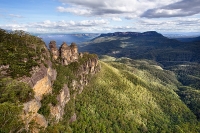
The entrance to the richly forested hills of the Blue Mountains is at Glenbrook/Lapstone, only about 50 minutes' drive from Sydney. Many coach companies offer day trips, usually from Circular Quay in Sydney. Alternatively, City Rail offers an efficient service to the Blue Mountains, or you can travel there direct from Sydney Airport. Once there, visitors can delight in one of the most spectacular wilderness parks in Australia. Cliff top vistas stretch across gum tree-lined valleys and craggy outcrops. It is superb walking country and adventure activities, from horse riding, caving and abseiling to tubing down mountain rivers, abound.The region is dotted with historic towns, most built from timber and stone, connected by scenic drives. Katoomba is the most visited town in the Blue Mountains, and the amazing rock formation of the Three Sisters at Echo Point is a must-see in the area. A great drawcard is the Blue Mountains 'Yulefest'. Visitors flock to the mountaintops in July and August to experience a mid-year Christmas and to revel in the occasional snowfall. Many of the region's guesthouses, hotels, motels, resorts and restaurants put on all the trappings of a traditional Christmas, complete with turkey, Christmas pudding and a great deal of fun.
Website : www.bluemts.com.au
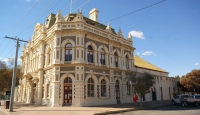
The historic town of Broken Hill lies in western New South Wales, in the area known as the 'Living Outback'. Here red dust roads lead off to national parks, opal fields, remote settlements and the Darling River. In Broken Hill art and mining live side by side as uncomfortable companions. Artists have come here to find their inspiration, at a spot where incredible wealth has been produced by exploitation of one of the world's greatest mineral deposits. Broken Hill is known as 'Silver City', being the site of the world's richest deposit of silver, lead and zinc.Visitors can visit a simulated mine or the real thing, donning lighted helmets to enter the subterranean world of the miners. This town is also a Mecca for artists and film-makers and has more than 20 art galleries. The famous Outback Royal Flying Doctor Service and School of the Air are also worth a visit. Visitors can tour the aircraft hangar or the radio room, which handles calls to and from remote towns and stations, covering 80 percent of Australia and treating about 160,000 patients a year.
Website : www.visitbrokenhill.com.au
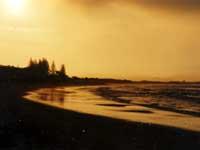
Nestled on the north coast of New South Wales and serving as the main town on Cape Byron, the holiday hub of Byron Bay occupies Australia's most easterly point. It is a haven of unspoilt beaches, laid-back pursuits, some quirky locals and a spiritual atmosphere which is making it burgeon as a desirable holiday resort.One of the greatest attractions of Byron Bay is that it's the best place on the Australian coast for land-based whale watching (between June and September). The Cape Byron walking trail offers views of dolphins playing in the waves, and humpback whales breaching as they migrate to the north. It is also undoubtedly paradise for those into adventurous outdoor activities, from skydiving to surfing. The magnificent scenery, the proximity to the rainforest, and the various nature reserves and sanctuaries make it a sought-after holiday destination for eco-tourists.Culturally, Byron Bay prides itself in being 'alternative', boasting a number of spiritual retreats and health spas. Annual events like the International East Coast Blues & Roots Music Festival at Easter, and the Byron Bay Writers' Festival in August, also draw the holiday crowds. Byron Bay can certainly be said to offer something for everyone, all year round.
Website : www.byron-bay.com
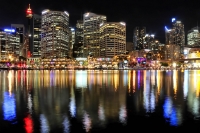
The waterside tourist precinct of Darling Harbour, close to the central business district, is crossed by a monorail and offers plenty of entertaining diversions, museums, carnival rides, restaurants and shops. For example, there is the Imax Theatre, with Australia's largest cinema screen; the huge Star City Casino and Sydney Entertainment Centre; and the magnificent Chinese Garden, with its serpentine paths and placid pools. Established in 1988 by the local Chinese community, to celebrate their heritage and to cement the bond between Sydney and the city of Guangzhou, the Chinese Garden of Friendship is styled along Classical lines, combining the four elements of water, plants, stone and architecture to create a perfect balance. Reminiscent of the gardens of the Shang dynasty from 3,000 years ago, and a popular tourist attraction, the Garden is a wonderful place to relax and rejuvenate with the whole family - picnicking, or just walking the meandering paths, enjoying the pagoda-style structures, the expert landscaping, and the tranquil courtyards.An absolute must-see is the Sydney Aquarium, one of the most popular attractions at Darling Harbour, and also one of the biggest and most impressive aquariums in the world. More than 5,000 Australian fish are displayed in their natural habitats, along with sharks, rays, platypus, seals, penguins, crocodiles and much more. Underwater walkways give visitors an intimate view of the unique aquatic environment. The Great Barrier Reef exhibit has live coral and many tropical fish, and visitors can take a glass-bottomed boat ride to see some dangerous sharks from up close.Also look out for the Powerhouse Museum and the National Maritime Museum. Children will go mad for the Powerhouse Museum, where all things scientific abound and exhibits include those that will boggle the mind, and astound the senses.
Website : www.darlingharbour.com.au
Transport : Darling Harbour is easily accessible by bus, train, monorail, light rail or ferry.
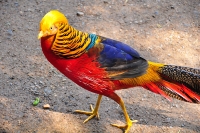
Families who visit the Featherdale Wildlife Park will be able to interact with and observe unique Australian animals like koalas, wallabies and emus up close and personal. Kids can have their photograph taken with one of these fuzzy animals and petting the koalas is also allowed, a rare thing in New South Wales. These popular favourites are members of one of the country's largest collections of native animals and bird life, and there are many other animals to meet. At the park there is also a cafe, a souvenir shop, and some picnic areas with barbeque facilities. Featherdale promises fun for animal lovers of all ages!
Address : 217-229 Kildare Road, Doonside
Website : www.featherdale.com.au
Telephone : (02) 9622 1644
Opening times : Open daily from 9am to 5pm. Closed on Christmas Day.
Admission : A$31 (adults); A$17 (children aged 3-15). Other concessions available
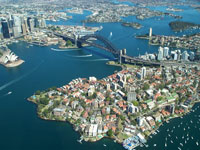
One of Sydney's most famous landmarks, the Harbour Bridge (known locally as the 'Coat Hanger') was completed in 1932 after claiming 16 lives during its construction. The bridge spans the 1,600-foot (500m) gap from the north to the south shore, which was previously only accessible by ferry, and accommodates pedestrian walkways, two railway lines and an eight-lane road. Visitors can experience the bridge in an adventurous way by climbing to the top as part of an organised group for breath-taking views and a feeling of personal achievement. For the less daring, 200 steps lead to the Pylon Lookout for equally fantastic views at 285 feet (87m) above the water, with three levels of exhibits on the way up depicting the history and construction of the bridge. The Pylon option is better for those afraid of heights, although stomachs will still drop!
Address : BridgeClimb starts at 5 Cumberland Street, The Rocks. Entry to the Pylon Lookout is from the pedestrian walkway on the Eastern side of the Bridge from the city; use the ‘Bridge Stairs’ in Cumberland Street
Website : www.bridgeclimb.com
Telephone : BridgeClimb: (0)2 8274 7777; Pylon Lookout: (0)2 9240 1100
Opening times : Pylon Lookout: daily 10am to 5pm. BridgeClimb operates daily at 10-minute intervals from early morning to evening
Admission : Prices vary according to activity, time of day and season. Check the official website for details.
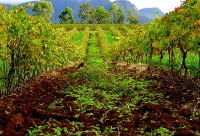
The Hunter Valley region is a 60-mile (100km) drive north of Sydney. It is a region already known to the world for its high quality wine, but is also fast becoming famous as an eco-tourism destination. Besides its vineyards and eateries, there are myriad places of interest, like Lake Macquarie, a glistening lake with magnificent beaches about 12 miles (19km) south of Newcastle; the beautiful Myall Lakes; and the attractive stretch of surfing beaches near Newcastle. Also nearby is the Barrington Tops World Heritage Wilderness Site, which, at 5,203 feet (1,586m) above sea level, contains some of the highest untamed natural bushland in Australia. One of the most popular coastal destinations in the region is Port Stephens, renowned for its crystal clear water and golden beaches. The harbour of Port Stephens is home to about 80 dolphins and many cruise boats offer close up views of these animals. Port Stephens is also a wonderful vantage point for whale watching in season.
Website : www.winecountry.com.au
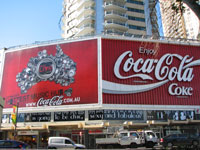
Once home to music halls and grand theatres, Kings Cross was transformed after World War II with the arrival of hundreds of troops visiting from the nearby naval base, and today still carries the reputation as the city's red-light district. Although the nightclubs, strip clubs, bars, restaurants and adult shops are still there, the atmosphere is slowly changing and levels of prostitution and drug-use have declined in recent years. The introduction of trendy cafes and the redevelopment of apartment buildings are attracting a wider crowd of people. The Cross is most sleazy at night when the bright lights come on, but during the day is an interesting mix of characters and is becoming increasingly artistic in its leanings.
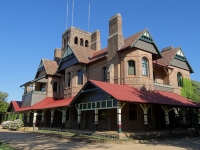
Also known as 'Big Sky Country', the New England region of New South Wales is a place of spacious beauty where it is possible to enjoy the great outdoors in the cool summers as well as cosy hospitality in the crisp winters. The centre of New England is Australia's country-music capital, Tamworth. The city has hosted the Australian Country Music Festival every January since 1973. Tamworth's population doubles to more than 60,000 when aficionados from across the land gather for the multi-day event, which culminates in the Golden Guitar Awards.Besides the music, Tamworth's other claim to fame is that it was the first town in the southern hemisphere to be lit by electricity. This historical fact has been enshrined in the Powerhouse Museum in town. Beyond Tamworth, the Big Sky Country includes tens of thousands of hectares of national park and provides fun outdoor activities for visitors, including horse riding, abseiling, fishing, fossicking, canoeing and bushwalking. Each national park offers distinct flora and fauna and a multitude of natural attractions.
Address : 250 miles (400km) northwest of Sydney.
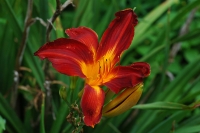
Sydney's 'green lung' is a 30-hectare botanical garden, established in 1816 and containing more than 7,500 species of plant. Australia's very first farm was on the site where the garden now flourishes, southeast of the Sydney Opera House. Paths criss-cross the gardens, leading strollers past two sets of ponds, garden sculptures and numerous horticultural areas. Don't miss the Sydney Tropical Centre; the rose, herb and succulent gardens; the First Farm; the Fernery; and the palm grove. Watch out for a young specimen of the rare Wollemi Pine (only about 38 adult trees exist in the world) in the Pioneer Garden.The gardens also offer some of the best views of Sydney Harbour, the Opera House and the Harbour Bridge. The path that skirts the harbour starting at the Opera House and leading around to Mrs Maquarie's Chair provides magnificent views of the harbour, particularly at sunset. The gardens also have a visitor's centre, shop, restaurants and kiosks. Free guided walks are offered at about 10.30am every day, except public holidays. Visitors who prefer not to walk can take a scenic train tour. Inside the gardens you can also admire Government House, formerly the residence of the New South Wales Governor, which sits atop a hillock overlooking the Opera House and Farm Cove. It is open to the public for tours.
Address : Mrs Macquaries Road
Website : www.rbgsyd.nsw.gov.au
Telephone : (02) 9231 8111
Transport : Ferry to Circular Quay, or bus 441 to the Art Gallery of NSW. It is also a stop on the Sydney Explorer bus. The nearest train station is Martin Place
Opening times : Daily from 7am. Closes at various hours depending on the month, from 5pm in winter to 8pm in summer.
Admission : Free
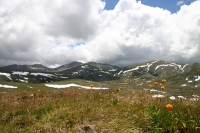
Australia's favourite winter playground is among the peaks of the Snowy Mountains, about 315 miles (500km) south of Sydney, where there are more than 145 miles (230km) of ski-trails, graded from beginner to championship level. Ski season lasts from June to October. The ski resorts are known for their warm hospitality, spectacular scenery, and their apres-ski entertainment. The largest resort is Perisher Blue, which is actually four resorts united to form a Mecca for snow-seekers. Another, at the foot of Mount Crackenback, is the resort of Thredbo, which is a recreation of a European Alpine village and features Australia's longest ski run, known as the Funnelweb. Australia is generally celebrated much more for its picturesque deserts than for snow and skiing, but the Snowy Mountains provide some surprisingly good winter sports facilities.
Website : www.snowymountains.com.au
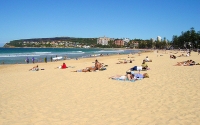
One thing that is not in short supply in Sydney is beautiful Pacific Ocean beaches. Anywhere in the city, except perhaps in the far west suburbs, you will never be more than half an hour away from one. Starting from popular Palm Beach to the north, you can take your pick along the coast: there is Whale, Avalon, Bilgola, Newport, Bungan, Mona Vale, Warriewood, Narrabeen-Collaroy, Long Reef, Curl Curl, Freshwater, North Steyne, Manly and Shelly! There are several small beaches around Sydney Harbour, and moving southwards one reaches the famous Bondi Beach, with its magnificent sweep of golden sand lined with an eclectic mix of ice-cream parlours, designer cafes and surf shops. The list goes on and on: a beach for everyone, all equipped with kiosks, white sand and golden bodies.Eight miles (13km) from the city centre, Manly is perhaps the most famous of the northern beaches; it was here, in 1902, that newspaper editor William Gocher first defied the state law against public bathing and today the white sand of the south beaches and the golden sand of the north beaches are crowded with swimmers, sunbathers and surfers. Manly can be reached by ferry from Circular Quay or by foot via the Manly Scenic Walkway from Spit Bridge in the city. This walk can take three or four hours but offers some of Sydney's most breath-taking views, as well as skirting some of its most exclusive neighbourhoods. Another spectacular but much shorter walk is along the cliffs from Bondi to Bronte Beach, which takes walkers past the famous Tamarama Beach and is very popular with joggers and, at the weekend, with families.
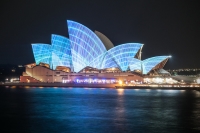
It may not be an ancient monument, but the architecturally distinctive Sydney Opera House epitomises the city as much as the Great Pyramid in Cairo or the Acropolis in Athens. Situated on Sydney's harbour at Bennelong Point, this intriguing, white-sailed landmark is no white elephant. It is a fully functional performing arts centre in constant use. The complex consists of a massive Concert Hall that seats more than 2,500 people and has some of the finest acoustics in the world; a smaller Opera Theatre, also used for ballet performances; a Drama Theatre, seating about 500 people; the smaller Playhouse; and the Boardwalk dance and music venue. The building, designed by Joørn Utzon, was completed in 1973 and cost over A$100 million, most of which was raised with a series of national lotteries. There was so much controversy involved in its construction that the Danish architect returned home without ever seeing his finished product. Free performances of various types are given outside on the boardwalks around the Opera House on Sunday afternoons. A variety of tours are available.
Address : Bennelong Point, Sydney Harbour
Website : www.sydneyoperahouse.com
Telephone : (0)2 9250 7111
Transport : Buses, trains and ferries go to Circular Quay, which is a five-minute walk from the Opera House
Admission : Tours and shows vary in cost - check the official website for details.
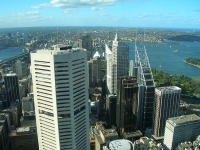
Sydney Tower, or the AMP Centrepoint Tower, is the tallest free-standing structure in the city, and one of the tallest in the country. Situated above the Centrepoint office building and shopping centre, the tower is one of the most popular tourist attractions in Sydney for its 360-degree views and Tower Skywalk platform. The observation deck is 820 feet (250m) above the city, with an enclosed viewing platform offering information on the points of interest.The Sydney Tower Skywalk platform sits above the observation deck at 853 feet (260m) above the ground, twice the height of the harbour bridge, and harnessed to the glass-floored platform, daredevils can hang out over the city far below. Check the official website listed below for ticket options.
Address : 100 Market Street, Centrepoint Building
Website : www.sydneytower.com.au
Telephone : 1 800 258 693
Transport : Sydney Explorer Bus Stop 14, monorail to City Centre Station
Opening times : Sydney Tower Observation Deck and OzTrek is open daily, from 9am. Closing times vary slightly according to season, with last guest entry at 9pm in summer and 8.30pm in winter.
Admission : Various ticket options are available. Note that discounts are available for booking online.
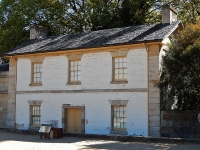
The best place to start exploring Australia's oldest city is at The Rocks, a restored 19th-century village at the southern end of the Sydney Harbour Bridge, which was the site of Australia's first European settlement in 1788, and is therefore considered to be the birthplace of the nation of Australia. The area features cobbled streets and squares, gas lamps, craft shops and small restaurants. Here too are several historic buildings, including one of the city's oldest, Cadman's Cottage, built in 1816, and two of Sydney's oldest pubs, the Lord Nelson and the Hero of Waterloo.It is recommended that visitors seek information and a map from The Rocks Visitor's Centre (in George Street) in order to make the most of the neighbourhood and its many attractions, which include museums, viewing sites, markets, monuments and buildings. From The Rocks it is also possible to access the Pylon Lookout on the famous Sydney Harbour Bridge for an amazing view of the harbour and beyond.
Website : www.therocks.com

01474 814411

Travel Guide powered by Word Travels, copyright © 2023 Globe Media Ltd. By its very nature information in this travel guide is subject to change at short notice and travellers are urged to verify information on which they're relying with the relevant authorities. Neither Globe Media Ltd nor Travel Vogue can accept any responsibility for any loss or inconvenience to any person as a result of information contained above.